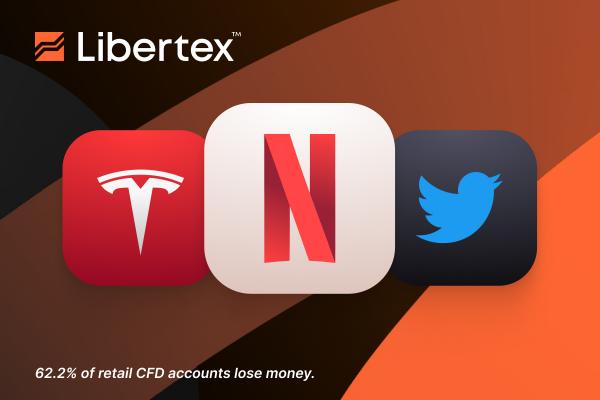Many of us will remember equities' heady heights of 2020 and 2021 with nostalgia. Back in the age of the meme stock, it seemed like the bull market would never end. Liquidity was flowing in from all sides, and it looked as if companies like Tesla, Netflix, Meta and their like were about as close to a sure thing you could find.
Fast forward to today, and all of these shares are down 30-60% in the past six months. While there are, of course, cyclical and macroeconomic factors affecting virtually the entire global market, the story surrounding US Big Tech is a unique one. A number of less famous names have been hit even harder, with some firms having up to 90% of their value wiped away since November 2021. In this article, we'll look at the latest developments influencing US tech stocks as we try to determine whether a trend reversal is on the cards.
Bubbles always burst
People often say hindsight is 20:20, but it didn't take an oracle to predict the crash we've seen in the first half of this year. Throughout the pandemic, analysts, commentators and just about everyone with a modicum of sense were saying how overvalued the stock market was. Price-to-earnings ratios in the high hundreds were commonplace, and it was clear that a correction was a matter of when not if.
That said, there were naturally some companies that were likely to revisit these heights eventually (such as Tesla, Meta and Amazon) and others that were just riding the hype train without a ticket (Block Inc, Sea Group and Shopify). As we begin to see the downtrend decelerate and the beginnings of a reversal take shape, long-term investors should perhaps consider picking up the likes of TSLA, AMZN, NFLX and META at a nice 30-40% average discount on all-time highs. It may well be impossible to call a bottom or top, but you may see when the market is offering you a relatively prospective deal.
Checking the report cards
Another time-tested way to sort the wheat from the chaff when bargain hunting in the Nasdaq is to look at fundamentals. Lucky for us, many of these companies have just released their Q2 earnings reports, giving us a fully up-to-date look at how their businesses have coped with the recent economic downturn.
Tesla, for instance, managed to shock Wall Street analysts by outperforming both on revenue ($400 million above predicted levels) and earnings per share of $2.27 (against a forecast of $1.81). This was particularly impressive given the forced shutdown of its Shanghai Gigafactory, as its other production facilities more than filled the gap to give Tesla its highest production month in its history.
Netflix's latest report paints a similar albeit less impressive picture. The streaming service had always been expected to lose subscribers as strong inflation dynamics force many consumers to tighten their belts, but it actually managed to only lose half the number predicted (970,000 vs 2,000,000). As a result of the revelations, the two tech giants have gained 8% and 15%, respectively, since Tuesday, 19 July, with Amazon and Meta also mirroring this dynamic.
Crisis averted?
It's still too early to tell whether this is a genuine trend reversal or just a convincing bull trap. Investors would do well to remember that inflation is still running riot, and the abnormally strong dollar means US exports are even less attractive to the rest of the world. Central banks everywhere are under pressure to raise interest rates at breakneck speed, which is seldom good news for equities. Nevertheless, it's fair to say that the foundations for sustainable growth are still in place for many of the Nasdaq's darlings.
The green revolution will certainly help TSLA, and META will undoubtedly benefit from the emergence of the metaverse in years to come. In addition, the ever-increasing share of the entertainment market held by digital streaming services can only benefit OG Netflix in the long run. Some of the less well-established tech names, however — those that have lost over 70% of their value in the past 6-8 months — are probably best left to one side for the time being. A handful of these may appear to have been a veritable steal 10 years from now, but many more will have provided negative returns or even disappeared entirely. As always, don't bet the farm; maintain proper diversification, and you can generally keep any losses manageable.
For more information on the wide range of US stock CFDs available to trade with Libertex, visit https://libertex.com/shares.
Risk Warning: CFDs are complex instruments and come with a high risk of losing money rapidly due to leverage. 62.2% of retail investor accounts lose money when trading CFDs with this provider. Tight spreads apply. Please check our spreads on the platform. Available for retail clients on the Libertex Trading Platform. You should consider whether you understand how CFDs work and whether you can afford to take the high risk of losing your money.


